Rural Imaginary: Data and ‘Precision Ag’
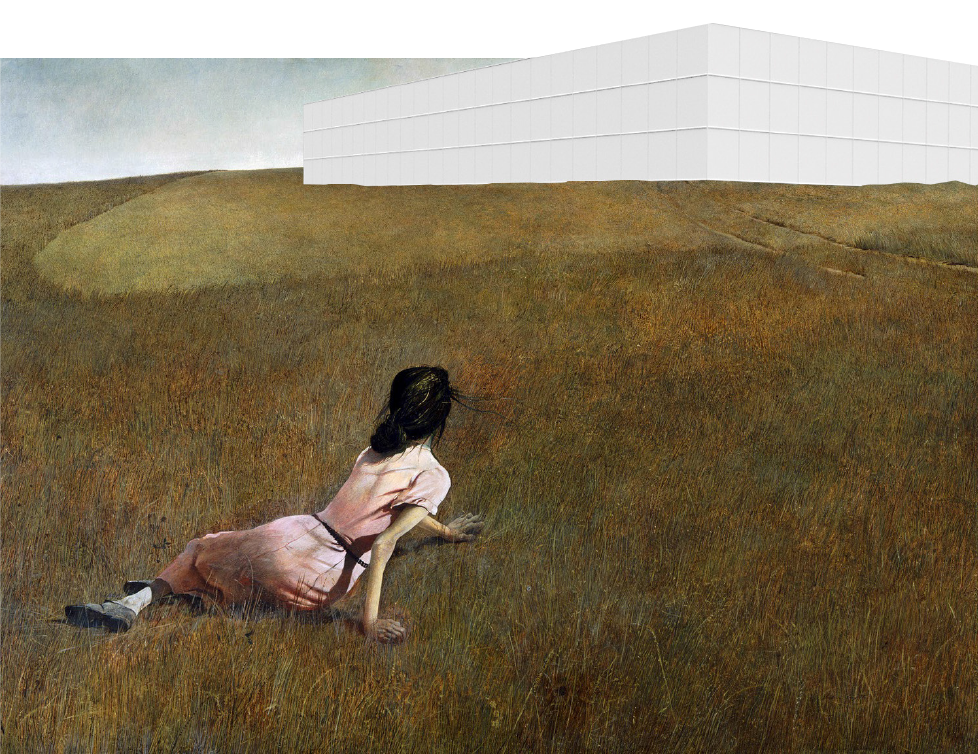
Ian Donaldson / 2018
Yale School of Architecture
For the first time in the world, the global urban population has surpassed the global rural population. By 2050 the global population is expected to surpass 9 Billion. Given the global pressures of food insecurity that accompany global population growth, the rural is poised to be the site of technological change at a scale which renders changes within cities comparatively insignificant. At the heart of this change will be the extension of telecommunications infrastructure and the application of large-scale automation, immersive data collection systems and cloud computing analytics.
![]()
Logistics emerge as a response to certain pressures. Pressures of efficiency, competition, organization, management and profitability become core concerns. This need to manage a multifaceted set of concerns for complex sets of spatial and temporal patterns have led to information revolutions throughout the 20th and 21st centuries. The complete informational overhaul achieved in companies such as UPS or Amazon or Walmart create new models and types of operational systems through realization of the capacities of data science and analytics. These informational regimes, in turn, produce new spatial typologies and configurations which propagate new behavioral patterns, typically re-grafted back onto the cultural memory of yesteryear.
Perhaps the largest pressures today are those associated with global population growth. By 2050 the global population is expected to grow by 33% to over 9 billion people.[1] As of 2008, for the first time in the history of the world, the global urban population has surpassed the global rural population.[2] (Fig. 1, 2) It wasn’t until 2010 that rural America officially began to lose population.[3] The pressures associated with population growth and the informational economy have pushed technology companies and logistical giants to consider the future of cities and look for urban sites to develop and apply ‘smart city’ technology.
![]() Fig. 1
Fig. 1
![]() Fig. 2
Fig. 2
As existing cities densify and the world rapidly urbanizes, the counterpart vision is of small-towns dwindling in size and discovering an increasingly polarized social and economic situation between rural and urban conditions. This reductive asymmetry is a contraposition between the increasing technological sophistication of agriculture as a practice and the lack of advanced telecommunications infrastructure in rural areas of the United States. This lack of services has been dubbed a ‘digital divide’ between urban and rural America. “The factors that we believe contribute to this ‘digital divide’ are likely the same forces that underlie the investment decisions of the major telecommunications companies: demand for advanced services, uncertainty about the future, and the federal and state regulatory environment.”[4] In comparing the relative availability or fiscal feasibility in telecommunications and connective infrastructural investment between rural and urban areas, it is clear that cities reside in the technological hopes of the future, while rural areas seem relegated to the past. (Fig. 3, 4) Politically this is reflected in the partisan assumptions and associations between ‘liberal’, ‘progressive’, ‘cities’ and the more ‘conservative’, ‘regressive’, hinterlands.
![]() Fig. 3
Fig. 3
![]() Fig. 4
Fig. 4
When one considers the future territories of technological expansion, inevitably cities and new forms of urban life and subjectivity become targets for speculation, while it is culturally assumed that invention and the rural are antithetical in some way. Within the history of architecture and urbanism, the lineage of utopian speculations have only a few examples of projects that do not focus on the city as subject, or that treat the rural surroundings as anything but supportive expanse. The rural as a condition evacuated by humans, existing only as a supportive infrastructure for the city is certainly the direction that development and settlement patterns would show today. Technologically sophisticated phenomenon such as Autonomous Vehicles, automated ports and container automation, variably automated transportation infrastructure and protocols, automated manufacturing processes etc. are invariably cultivated near or within cities. This however, does not mean that the rural isn’t a frontier of tremendous change.
![]() Fig. 5
Fig. 5
![]() Fig. 6
Fig. 6
My argument is that due to global pressures of food insecurity that accompany global population growth, the rural is poised to be the site of technological change at a scale which renders changes within cities comparatively insignificant. At the heart of this change will be the extension of telecommunications infrastructure and the application of large-scale automation, immersive data collection systems and cloud computing analytics.
![]() Fig. 7
Fig. 7
![]() Fig. 8
Fig. 8
Rapid population increases are accompanied by increased demand for food, fiber and biofuels. This means the world needs to increase global agricultural output by over 70%. [5] In the United States this would mean increasing national corn yield average from 160 bushels/ acre to over 300. This would also mean increasing national wheat yields from 45 bushels/acre to 90. [6] Accelerating yields on a fixed resource at that scale is immensely challenging. However, in the past 100 years, agricultural yields have doubled three times.[7] Each time that occurred was due primarily to application of better equipment and management of information to bolster efficiency. The bright spot on the horizon for agricultural embrace of the fourth industrial age comes with the advent of ‘precision ag’.
![]() Fig. 9
Fig. 9
![]() Fig. 10
Fig. 10
Precision agriculture began developing in the mid-1980’s with the introduction of GPS tractor guidance. The early systems were optical features such as light bars which would help the driver stay on a straight path, avoiding double cutting and boosting a more efficient path coverage of the plot for harvesting, fertilizing and protecting. (Fig. 5, 6) However, far beyond simply enhancing navigational tools for the tractors, precision agriculture has now evolved into complex web of informational and technological management that combines “sensors, information systems, enhanced machinery, and informed management to optimize production by accounting for variability and uncertainties” that are inherent to agricultural systems. (Fig. 7, 8)
This is a logistical desire, with serious ethical and economic motivating factors. When comparing the future technological transformations of rural and urban landscapes, the key to implementing fully automated productive and informational systems will rely on the latent possibilities of the rural because of its relative simplicity. (Fig. 9, 10) It is also ostensibly a Cartesian system. A brief comparison between the rings and intricacies of cities such as Boston and the defining feature of rural landscapes, the Jeffersonian Grid. When compared with the relative complexity of urban environments, rural landscape are ostensibly a tabula rasa, Cartesian space. This means that it is a much easier site for the application and testing of fully automated landscapes. [8]
![]() Fig. 11
Fig. 11
![]() Fig. 12
Fig. 12
Previously unthinkable corporate partnerships, governmental research grants, educational institutions and a host of open-source individual ‘agro-preneurs’ are experimenting with the productive capacities of big data applied to traditional agricultural practices. Modern farming is an increasingly scientific and complex endeavor. One must carefully manage the amount and composition of pesticides, herbicides and fertilizer, as well as highly unpredictable and variable timing schedules to manage. In this highly volatile and complex information system, the technology of the Farmer’s Almanac has been replaced with massive data collection systems to forecast weather, predict maximum yield harvest scheduling, supply chain management and customer service and funding is coming more from corporate research and design coffers than from historical fundraisers such as ‘Farm-Aid.’ (Fig. 11, 12) It’s not far in future, when big data, analytics, IoT, cloud, cognitive computing and AI will be as important to agriculture as seeds, irrigation, pesticides, tractors, and scarecrows.
One such partnership is between IBM and John Deere. Announced in 2016, this partnership aims to create a ‘futuristic model for agricultural production.’ “Watson AI platform will provide workers with precise instructions, while the logistics processes will control themselves.”[9] The AI platform is being used predominantly for its image recognition algorithms. (Fig. 13, 14) One application is to allow workers to take photos along the production process and ensure that the manufacturing assembly is error free. Another use is being applied to live data and variable rate technology for real-time agricultural uses. “Three types of sensors are commercially available: electrical resistivity/conductivity or capacitance; optical sensors that obtain visible and near-infrared (Vis_NIR) spectra from within the soil; and electrochemical sensors that use ion-selective membranes to detect the activity of ions such as hydrogen, potassium, or nitrate.” [10] John Deere is prototyping fully connected agricultural equipment than informationally connects satellite imagery, built-in sensors and IBM’s cloud computing and AI algorithms.
![]() Fig. 13
Fig. 13
![]()
Fig. 14
The integration of these features draw visions of entirely automated farms with vastly fewer farm hands. 90% of all crop loses are due to the unpredictability of weather, including water and nutrient management. [11] The IoT Watson platform would be able to provide automated real-time monitoring and forecasting. The platform then would also extend the cloud information connection to real-time variable rate technology that John Deere and similar agricultural machinery giants have included in their products for the past decade. These applications in real-time would correct the amounts of fertilizer, nitrogen, protection, water etc. that get distributed over a given plot of farm land.
![]() Fig. 15
Fig. 15
![]() Fig. 16
Fig. 16
On the John Deere website, the marketing strategy is powerful. It amounts to an extrapolation of Peter Drucker’s “You can’t manage what you can’t measure.” The navigation page on the ‘Precision Ag Technology’ webpage propagates the same mythologies about the profitability and freedom that accompany applications of ‘smart tech’ everywhere. “Remote Management – Run your operation from your office. Or from the beach // Guidance – AutoTrac hands-free guidance pays for itself in 2 years. Then it’s all profit.” [12] (Fig. 15, 16) However, given the demographics of the Agricultural landscape in the United States, where 89.7% of operating farms are small family-farms but which only account for 24.2% of the overall value of production, the investment in precision agriculture is a difficult fiscal decision. This imbalance between huge numbers of small farms, yet with diminishing economic value is embedded in the erosion and exodus from the rural across the country. The most profitable agricultural enterprises are large-family farms, defined as having their annual gross cash farm income (GCFI) at least above $1 million, dominate the value of production with 42.4%, yet represent just 2.9% of the total number of farms. [13] (Fig. 17)
Perhaps more staggering is the imbalance between acres operated and value of production. For small family farms, accounting for 24.2% of value produced, account for 48.4% of acres operated. For large-family farms, accounting for 42.4% of value produced, account for 23.0% of acres operated. Establishing a coefficient to describe the value of production per acre operated, large family farms (1.8) are over three times more economically productive than their small family (0.5) counterparts. This runs very much counter to the widely held promise of technology and the myth of self-entrepreneurship. It seems, in the countryside, there will be no garagebands or startups. The implementation of big data with powerfully centralized corporate resources will be incredibly profitable for some, but is and will continue to disrupt the rural social fabric and cultural/spatial typologies of the countryside.
![]() Fig. 17
Fig. 17
![]() Fig. 18
Fig. 18
As automation and the information revolution sweeps over the agrarian landscape, spurred by the pressures of rising global food scarcity, the trend of a rapidly urbanizing global population will accelerate. Forms of rural life, of communities organized across an expanse of farm land, where cooperation and supply chains demanded the establishment of communities, are slipping away. There will of course still need to be on-site labor, but in much smaller numbers, as farm-hand labor becomes astronomically more expensive than automated drone-born fertilization, for instance.
The advantages for maximizing yield and the logistical revolution makes sense for companies such as John Deere. However, it is the telecommunications and data analysis and technology companies that will profit the most. The digital divide across the country, is now a huge opportunity to extend services to centralized hubs, as larger and larger agricultural enterprises centralize, establishing broadband connections will be more akin to providing infrastructure to a city, rather than a decentralized hamlet. “To date, GNSS-based vehicle guidance has been the most widely used precision agriculture technology. It allows the operation of agricultural vehicles along parallel tracks or on predefined paths, which results in less stressful driving, along with significantly fewer gaps and overlaps... Recent auto-guidance systems steer agricultural vehicles without direct input from operators. Field robots are the next logical step in the automation of crop production.” [14] Given that these systems, rudimentary forms of which have been in place for two decades, rely almost exclusively on satellite telecommunications rather than broadband, it has allows telecommunications to stand at bay as logistics and technological satellite frontiers act as the proverbial canary in the coal mine. In order for these technologies to thrive however, and truly install a new form of rural existence, there are necessary telecommunication infrastructural investments.
Playing between educational institutions and government research grants, telecommunications companies are beginning to experiment with drastically automated agricultural frontiers. Despite its seeming simplicity and some pejorative cultural connotations, agriculture has always been an incredible coordination of complex sets of information, material supply flows, labor practices, spatial variables, and forms of life and subjectivity. As advertised by John Deere’s ‘Precision Ag – Remote Management’, “Run your operation from your office. Or from the beach.” There will be a decoupling of agricultural business from historic forms of rural life. The labor forces for an agricultural enterprise will be dramatically reduced as serviceability, expertise and operation are sourced to/augmented by cloud computing, IoT, automation and image recognition algorithms. The technological and logistical revolutions of agriculture’s hybridization with information management will completely reshape the cultural reality of rural landscapes.
![]()
Bibliography ↗
Yale School of Architecture
For the first time in the world, the global urban population has surpassed the global rural population. By 2050 the global population is expected to surpass 9 Billion. Given the global pressures of food insecurity that accompany global population growth, the rural is poised to be the site of technological change at a scale which renders changes within cities comparatively insignificant. At the heart of this change will be the extension of telecommunications infrastructure and the application of large-scale automation, immersive data collection systems and cloud computing analytics.
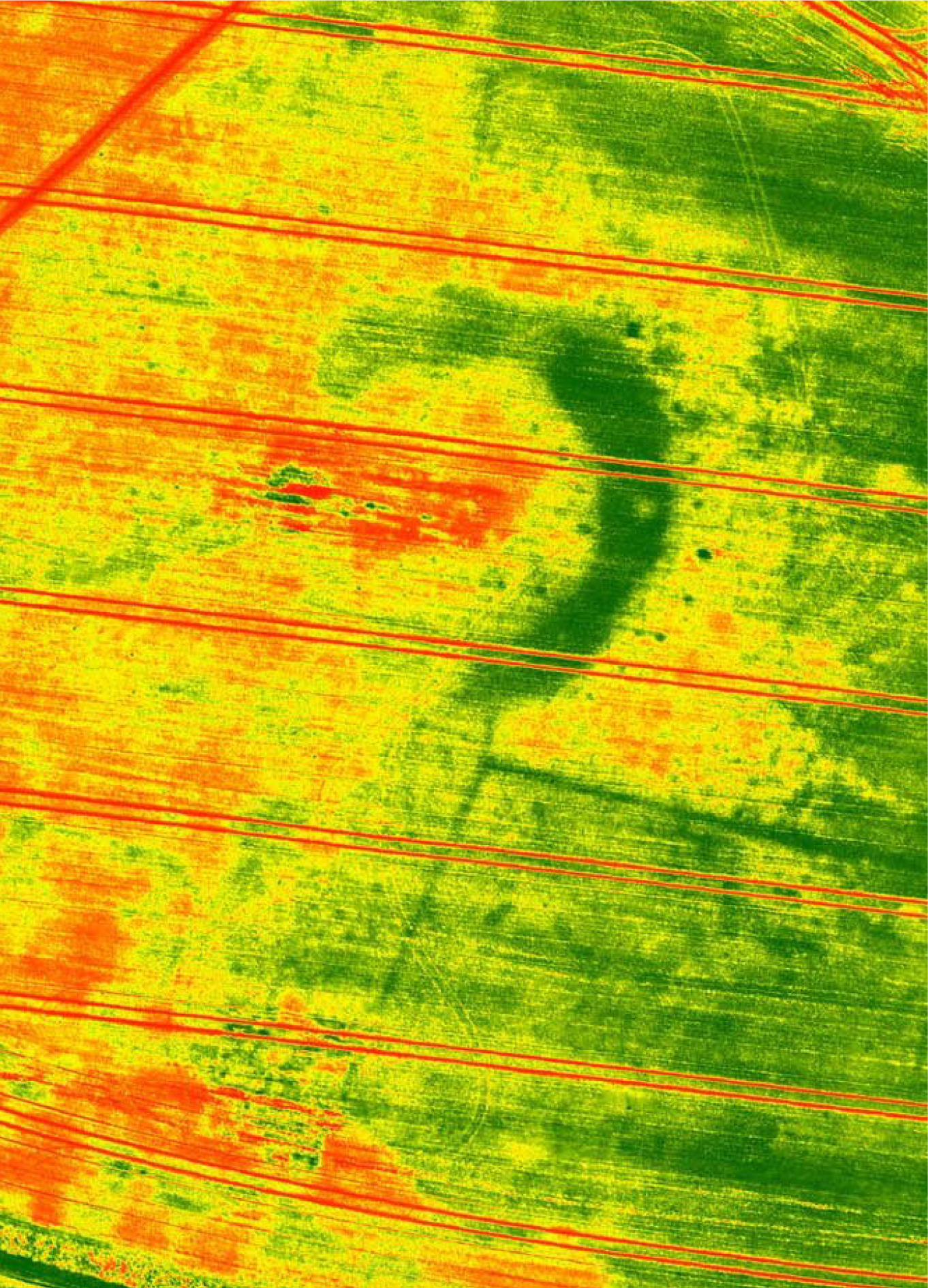
Logistics emerge as a response to certain pressures. Pressures of efficiency, competition, organization, management and profitability become core concerns. This need to manage a multifaceted set of concerns for complex sets of spatial and temporal patterns have led to information revolutions throughout the 20th and 21st centuries. The complete informational overhaul achieved in companies such as UPS or Amazon or Walmart create new models and types of operational systems through realization of the capacities of data science and analytics. These informational regimes, in turn, produce new spatial typologies and configurations which propagate new behavioral patterns, typically re-grafted back onto the cultural memory of yesteryear.
Perhaps the largest pressures today are those associated with global population growth. By 2050 the global population is expected to grow by 33% to over 9 billion people.[1] As of 2008, for the first time in the history of the world, the global urban population has surpassed the global rural population.[2] (Fig. 1, 2) It wasn’t until 2010 that rural America officially began to lose population.[3] The pressures associated with population growth and the informational economy have pushed technology companies and logistical giants to consider the future of cities and look for urban sites to develop and apply ‘smart city’ technology.
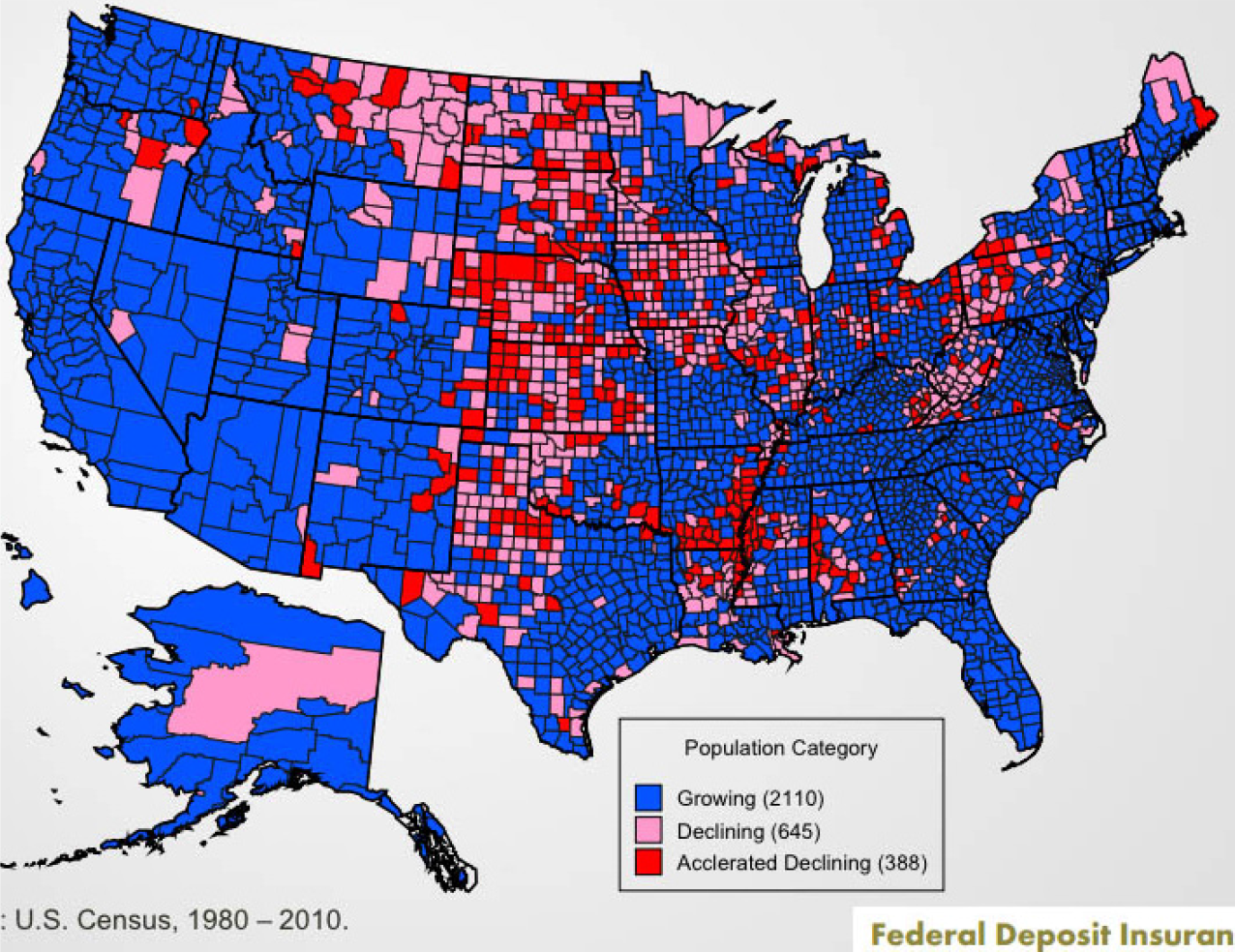 Fig. 1
Fig. 1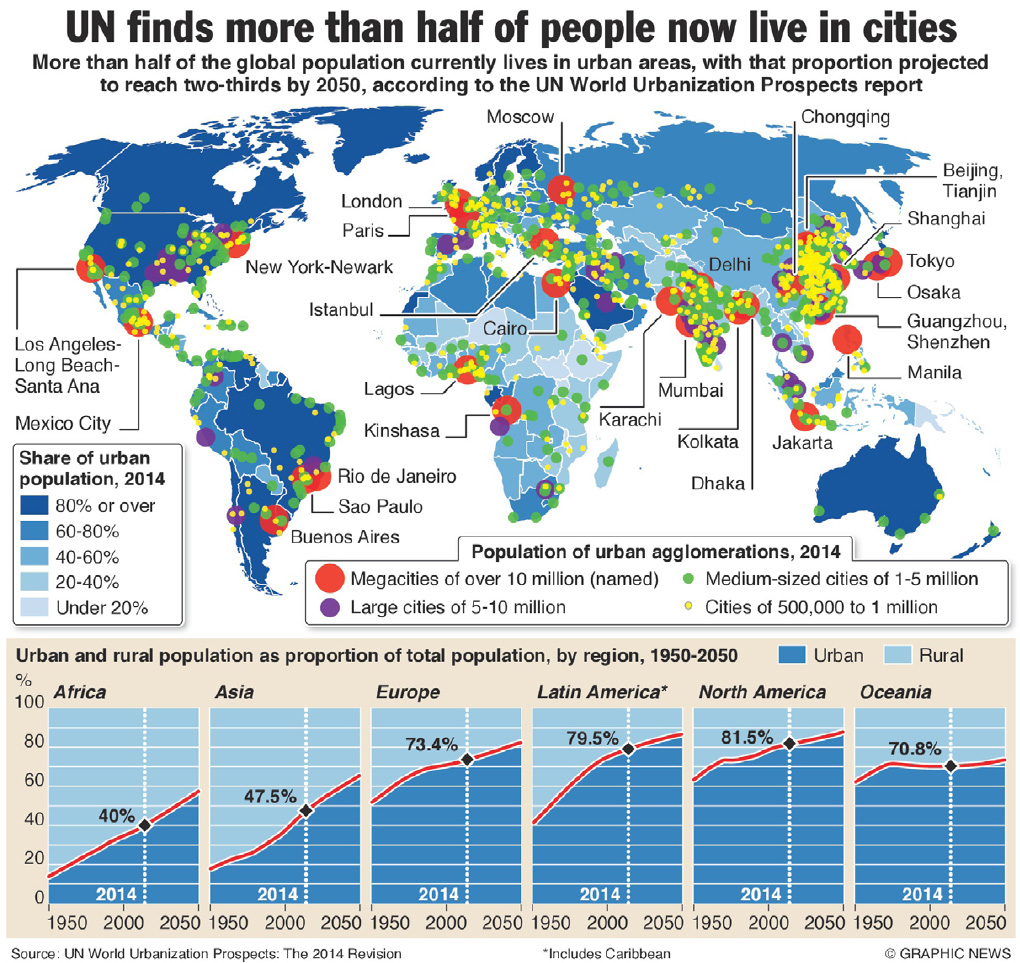 Fig. 2
Fig. 2As existing cities densify and the world rapidly urbanizes, the counterpart vision is of small-towns dwindling in size and discovering an increasingly polarized social and economic situation between rural and urban conditions. This reductive asymmetry is a contraposition between the increasing technological sophistication of agriculture as a practice and the lack of advanced telecommunications infrastructure in rural areas of the United States. This lack of services has been dubbed a ‘digital divide’ between urban and rural America. “The factors that we believe contribute to this ‘digital divide’ are likely the same forces that underlie the investment decisions of the major telecommunications companies: demand for advanced services, uncertainty about the future, and the federal and state regulatory environment.”[4] In comparing the relative availability or fiscal feasibility in telecommunications and connective infrastructural investment between rural and urban areas, it is clear that cities reside in the technological hopes of the future, while rural areas seem relegated to the past. (Fig. 3, 4) Politically this is reflected in the partisan assumptions and associations between ‘liberal’, ‘progressive’, ‘cities’ and the more ‘conservative’, ‘regressive’, hinterlands.
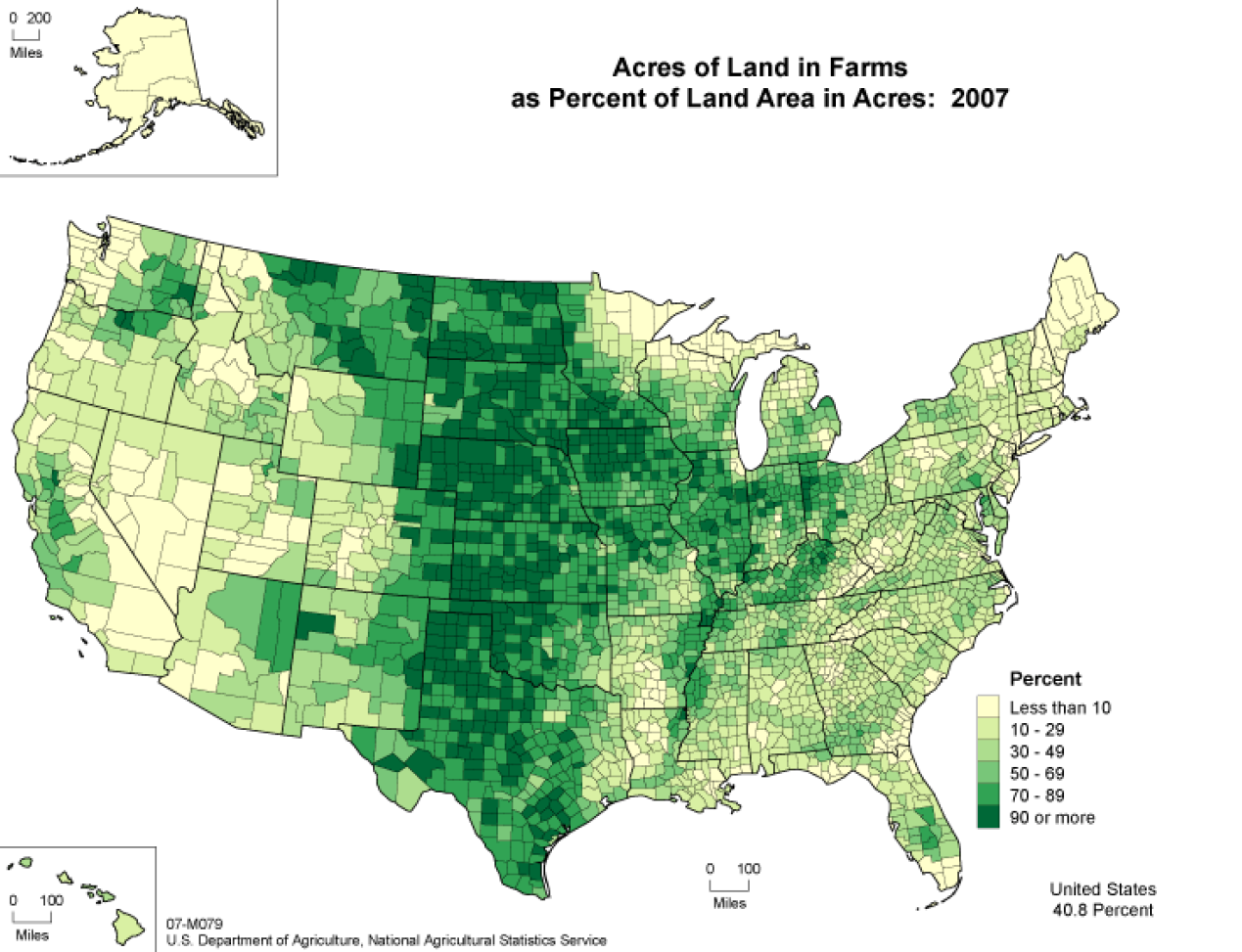 Fig. 3
Fig. 3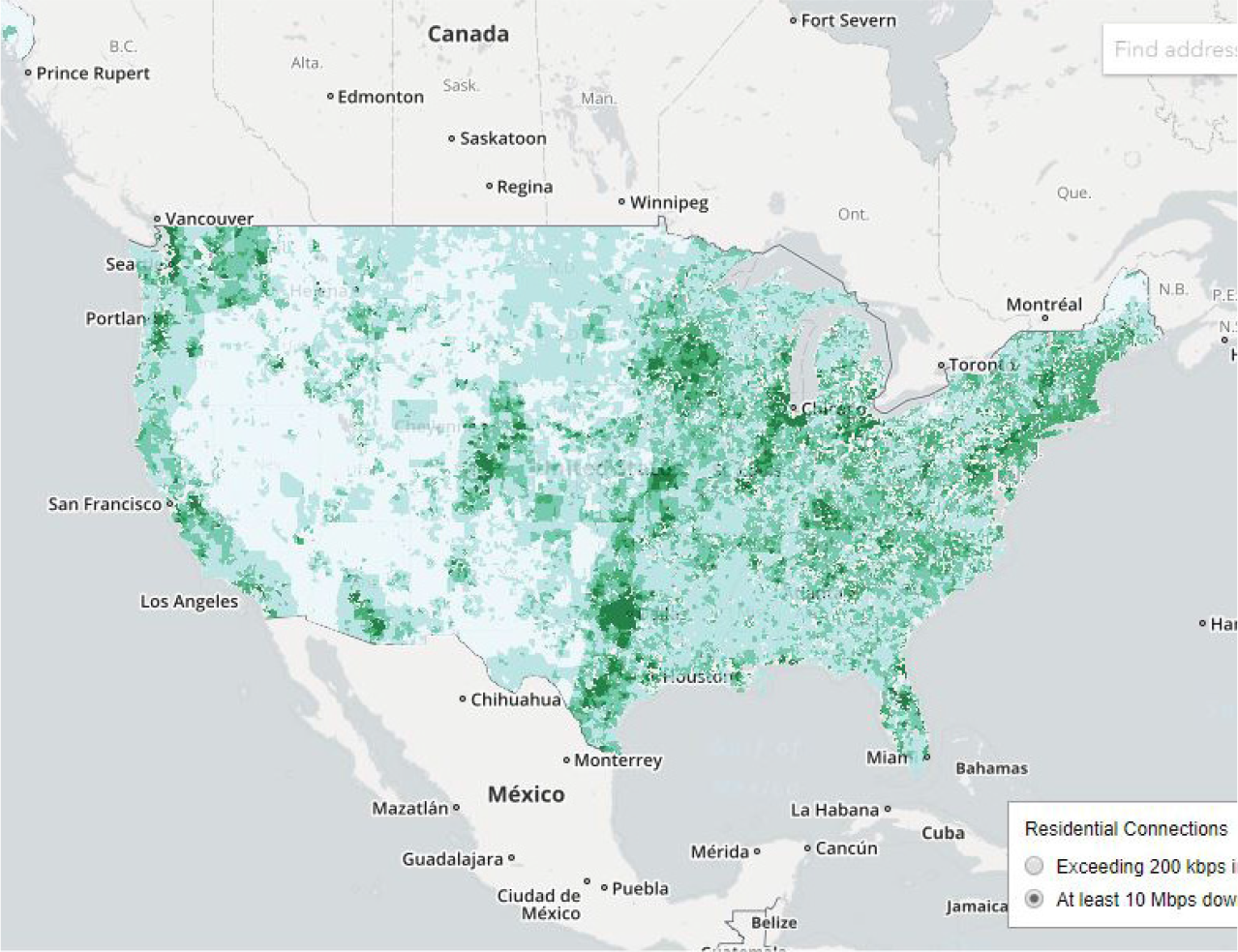 Fig. 4
Fig. 4When one considers the future territories of technological expansion, inevitably cities and new forms of urban life and subjectivity become targets for speculation, while it is culturally assumed that invention and the rural are antithetical in some way. Within the history of architecture and urbanism, the lineage of utopian speculations have only a few examples of projects that do not focus on the city as subject, or that treat the rural surroundings as anything but supportive expanse. The rural as a condition evacuated by humans, existing only as a supportive infrastructure for the city is certainly the direction that development and settlement patterns would show today. Technologically sophisticated phenomenon such as Autonomous Vehicles, automated ports and container automation, variably automated transportation infrastructure and protocols, automated manufacturing processes etc. are invariably cultivated near or within cities. This however, does not mean that the rural isn’t a frontier of tremendous change.
 Fig. 5
Fig. 5 Fig. 6
Fig. 6My argument is that due to global pressures of food insecurity that accompany global population growth, the rural is poised to be the site of technological change at a scale which renders changes within cities comparatively insignificant. At the heart of this change will be the extension of telecommunications infrastructure and the application of large-scale automation, immersive data collection systems and cloud computing analytics.
 Fig. 7
Fig. 7 Fig. 8
Fig. 8Rapid population increases are accompanied by increased demand for food, fiber and biofuels. This means the world needs to increase global agricultural output by over 70%. [5] In the United States this would mean increasing national corn yield average from 160 bushels/ acre to over 300. This would also mean increasing national wheat yields from 45 bushels/acre to 90. [6] Accelerating yields on a fixed resource at that scale is immensely challenging. However, in the past 100 years, agricultural yields have doubled three times.[7] Each time that occurred was due primarily to application of better equipment and management of information to bolster efficiency. The bright spot on the horizon for agricultural embrace of the fourth industrial age comes with the advent of ‘precision ag’.
 Fig. 9
Fig. 9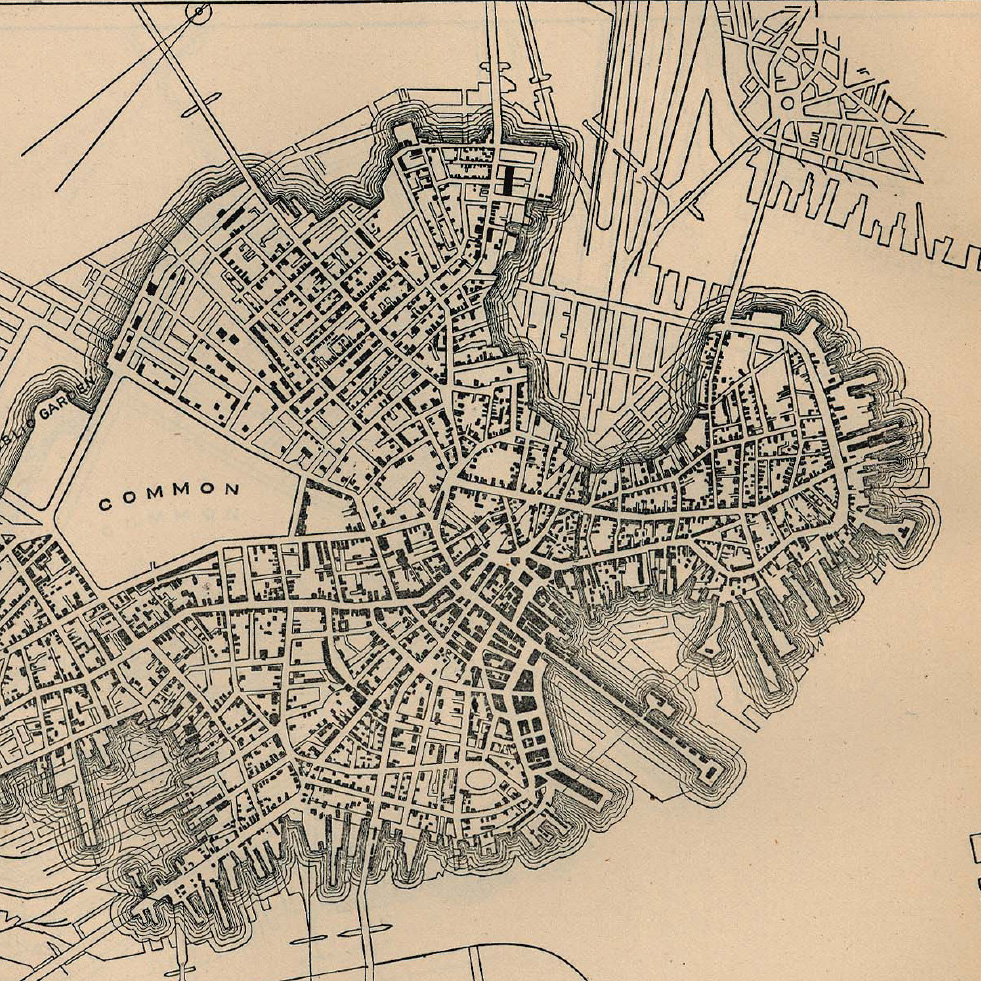 Fig. 10
Fig. 10Precision agriculture began developing in the mid-1980’s with the introduction of GPS tractor guidance. The early systems were optical features such as light bars which would help the driver stay on a straight path, avoiding double cutting and boosting a more efficient path coverage of the plot for harvesting, fertilizing and protecting. (Fig. 5, 6) However, far beyond simply enhancing navigational tools for the tractors, precision agriculture has now evolved into complex web of informational and technological management that combines “sensors, information systems, enhanced machinery, and informed management to optimize production by accounting for variability and uncertainties” that are inherent to agricultural systems. (Fig. 7, 8)
This is a logistical desire, with serious ethical and economic motivating factors. When comparing the future technological transformations of rural and urban landscapes, the key to implementing fully automated productive and informational systems will rely on the latent possibilities of the rural because of its relative simplicity. (Fig. 9, 10) It is also ostensibly a Cartesian system. A brief comparison between the rings and intricacies of cities such as Boston and the defining feature of rural landscapes, the Jeffersonian Grid. When compared with the relative complexity of urban environments, rural landscape are ostensibly a tabula rasa, Cartesian space. This means that it is a much easier site for the application and testing of fully automated landscapes. [8]
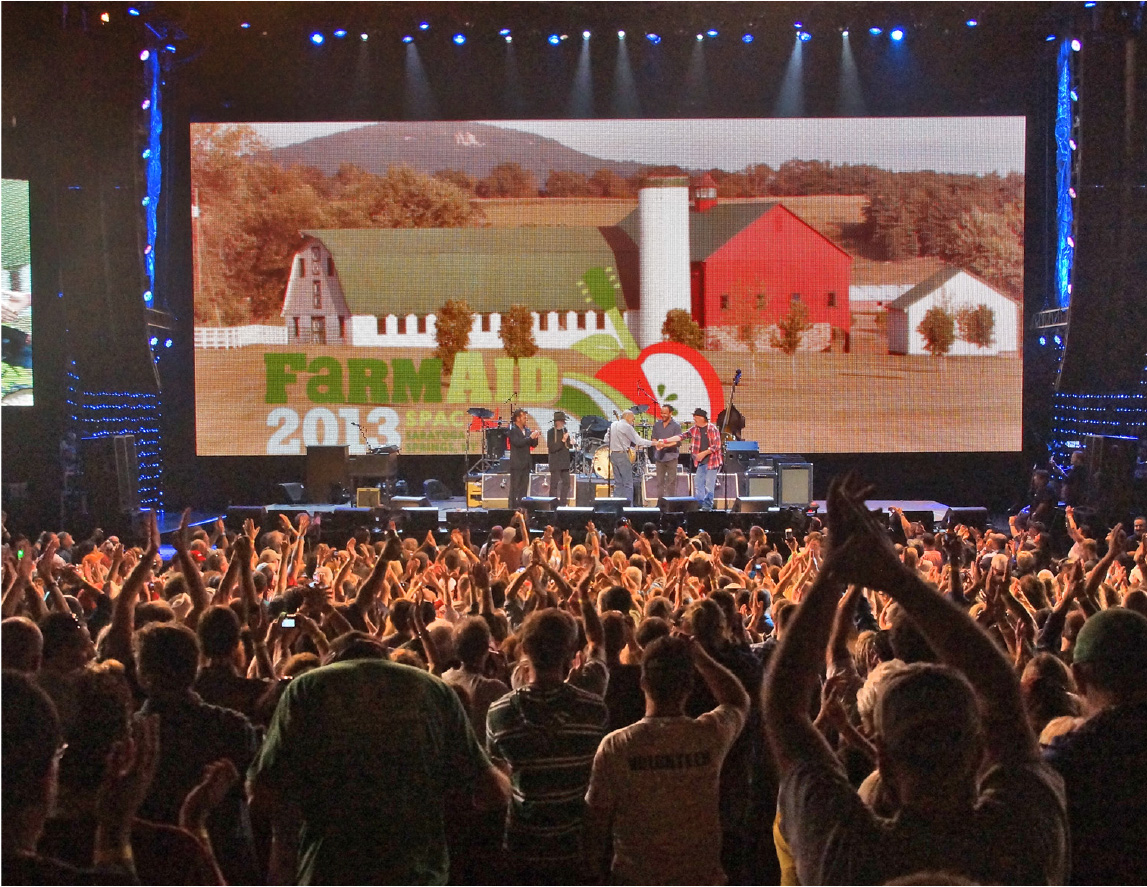 Fig. 11
Fig. 11 Fig. 12
Fig. 12Previously unthinkable corporate partnerships, governmental research grants, educational institutions and a host of open-source individual ‘agro-preneurs’ are experimenting with the productive capacities of big data applied to traditional agricultural practices. Modern farming is an increasingly scientific and complex endeavor. One must carefully manage the amount and composition of pesticides, herbicides and fertilizer, as well as highly unpredictable and variable timing schedules to manage. In this highly volatile and complex information system, the technology of the Farmer’s Almanac has been replaced with massive data collection systems to forecast weather, predict maximum yield harvest scheduling, supply chain management and customer service and funding is coming more from corporate research and design coffers than from historical fundraisers such as ‘Farm-Aid.’ (Fig. 11, 12) It’s not far in future, when big data, analytics, IoT, cloud, cognitive computing and AI will be as important to agriculture as seeds, irrigation, pesticides, tractors, and scarecrows.
One such partnership is between IBM and John Deere. Announced in 2016, this partnership aims to create a ‘futuristic model for agricultural production.’ “Watson AI platform will provide workers with precise instructions, while the logistics processes will control themselves.”[9] The AI platform is being used predominantly for its image recognition algorithms. (Fig. 13, 14) One application is to allow workers to take photos along the production process and ensure that the manufacturing assembly is error free. Another use is being applied to live data and variable rate technology for real-time agricultural uses. “Three types of sensors are commercially available: electrical resistivity/conductivity or capacitance; optical sensors that obtain visible and near-infrared (Vis_NIR) spectra from within the soil; and electrochemical sensors that use ion-selective membranes to detect the activity of ions such as hydrogen, potassium, or nitrate.” [10] John Deere is prototyping fully connected agricultural equipment than informationally connects satellite imagery, built-in sensors and IBM’s cloud computing and AI algorithms.
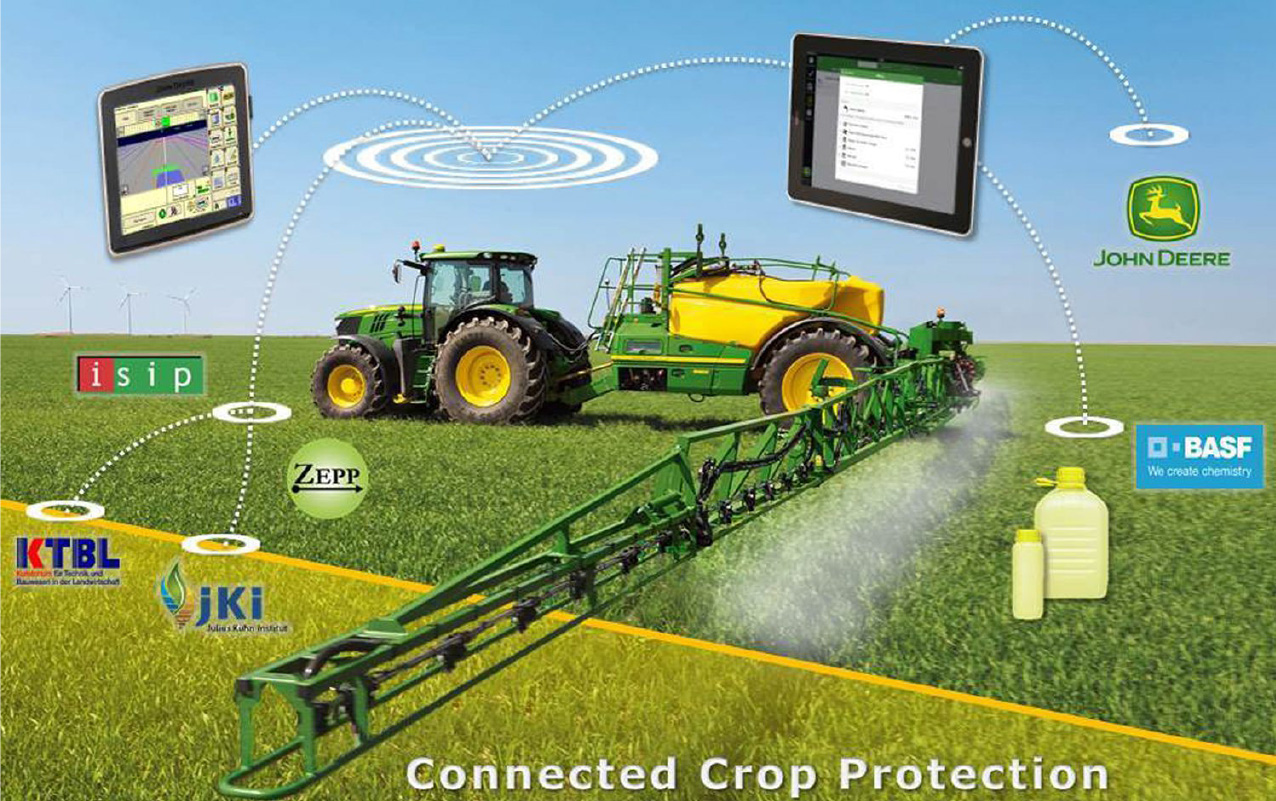 Fig. 13
Fig. 13
Fig. 14
The integration of these features draw visions of entirely automated farms with vastly fewer farm hands. 90% of all crop loses are due to the unpredictability of weather, including water and nutrient management. [11] The IoT Watson platform would be able to provide automated real-time monitoring and forecasting. The platform then would also extend the cloud information connection to real-time variable rate technology that John Deere and similar agricultural machinery giants have included in their products for the past decade. These applications in real-time would correct the amounts of fertilizer, nitrogen, protection, water etc. that get distributed over a given plot of farm land.
 Fig. 15
Fig. 15 Fig. 16
Fig. 16On the John Deere website, the marketing strategy is powerful. It amounts to an extrapolation of Peter Drucker’s “You can’t manage what you can’t measure.” The navigation page on the ‘Precision Ag Technology’ webpage propagates the same mythologies about the profitability and freedom that accompany applications of ‘smart tech’ everywhere. “Remote Management – Run your operation from your office. Or from the beach // Guidance – AutoTrac hands-free guidance pays for itself in 2 years. Then it’s all profit.” [12] (Fig. 15, 16) However, given the demographics of the Agricultural landscape in the United States, where 89.7% of operating farms are small family-farms but which only account for 24.2% of the overall value of production, the investment in precision agriculture is a difficult fiscal decision. This imbalance between huge numbers of small farms, yet with diminishing economic value is embedded in the erosion and exodus from the rural across the country. The most profitable agricultural enterprises are large-family farms, defined as having their annual gross cash farm income (GCFI) at least above $1 million, dominate the value of production with 42.4%, yet represent just 2.9% of the total number of farms. [13] (Fig. 17)
Perhaps more staggering is the imbalance between acres operated and value of production. For small family farms, accounting for 24.2% of value produced, account for 48.4% of acres operated. For large-family farms, accounting for 42.4% of value produced, account for 23.0% of acres operated. Establishing a coefficient to describe the value of production per acre operated, large family farms (1.8) are over three times more economically productive than their small family (0.5) counterparts. This runs very much counter to the widely held promise of technology and the myth of self-entrepreneurship. It seems, in the countryside, there will be no garagebands or startups. The implementation of big data with powerfully centralized corporate resources will be incredibly profitable for some, but is and will continue to disrupt the rural social fabric and cultural/spatial typologies of the countryside.
 Fig. 17
Fig. 17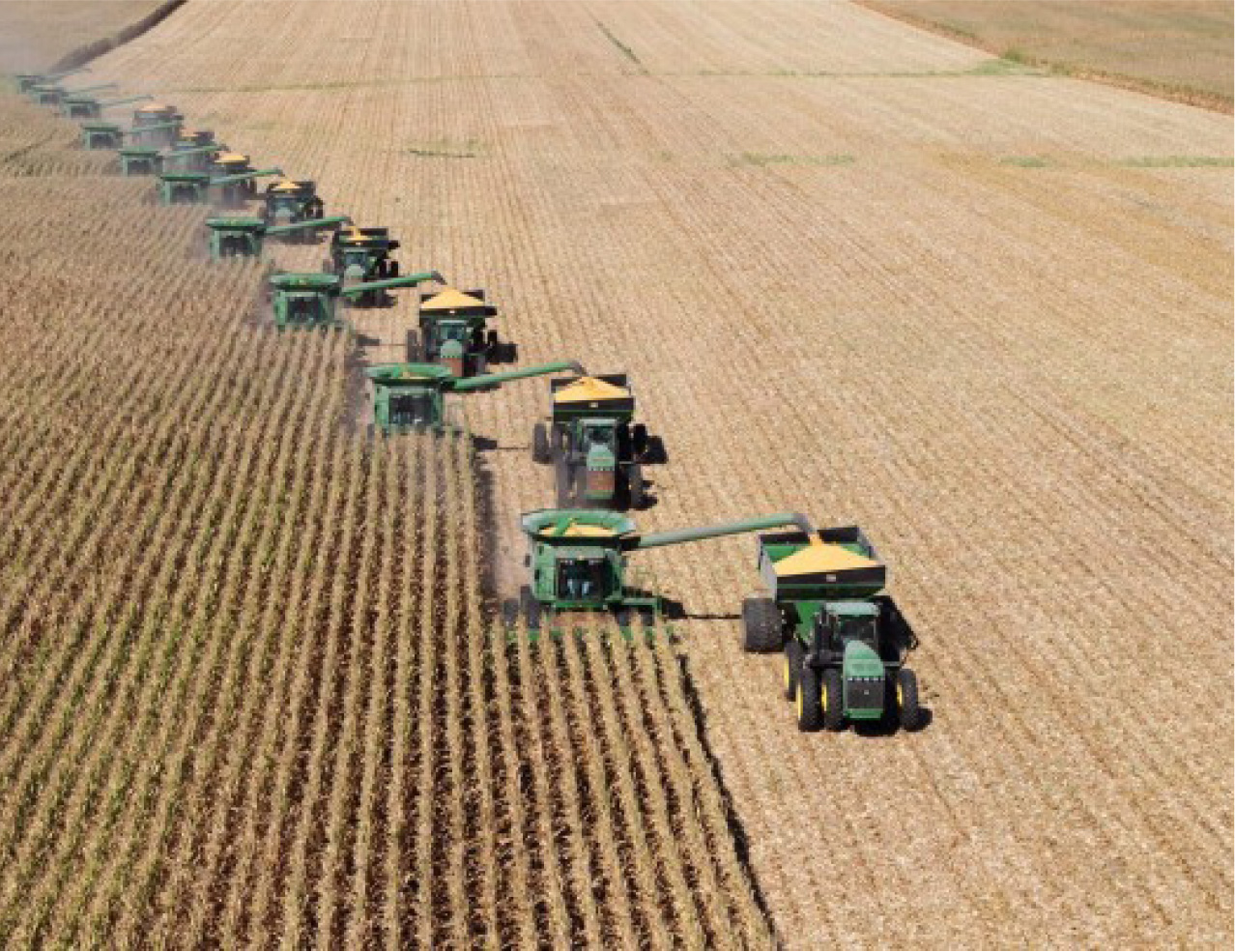 Fig. 18
Fig. 18As automation and the information revolution sweeps over the agrarian landscape, spurred by the pressures of rising global food scarcity, the trend of a rapidly urbanizing global population will accelerate. Forms of rural life, of communities organized across an expanse of farm land, where cooperation and supply chains demanded the establishment of communities, are slipping away. There will of course still need to be on-site labor, but in much smaller numbers, as farm-hand labor becomes astronomically more expensive than automated drone-born fertilization, for instance.
The advantages for maximizing yield and the logistical revolution makes sense for companies such as John Deere. However, it is the telecommunications and data analysis and technology companies that will profit the most. The digital divide across the country, is now a huge opportunity to extend services to centralized hubs, as larger and larger agricultural enterprises centralize, establishing broadband connections will be more akin to providing infrastructure to a city, rather than a decentralized hamlet. “To date, GNSS-based vehicle guidance has been the most widely used precision agriculture technology. It allows the operation of agricultural vehicles along parallel tracks or on predefined paths, which results in less stressful driving, along with significantly fewer gaps and overlaps... Recent auto-guidance systems steer agricultural vehicles without direct input from operators. Field robots are the next logical step in the automation of crop production.” [14] Given that these systems, rudimentary forms of which have been in place for two decades, rely almost exclusively on satellite telecommunications rather than broadband, it has allows telecommunications to stand at bay as logistics and technological satellite frontiers act as the proverbial canary in the coal mine. In order for these technologies to thrive however, and truly install a new form of rural existence, there are necessary telecommunication infrastructural investments.
Playing between educational institutions and government research grants, telecommunications companies are beginning to experiment with drastically automated agricultural frontiers. Despite its seeming simplicity and some pejorative cultural connotations, agriculture has always been an incredible coordination of complex sets of information, material supply flows, labor practices, spatial variables, and forms of life and subjectivity. As advertised by John Deere’s ‘Precision Ag – Remote Management’, “Run your operation from your office. Or from the beach.” There will be a decoupling of agricultural business from historic forms of rural life. The labor forces for an agricultural enterprise will be dramatically reduced as serviceability, expertise and operation are sourced to/augmented by cloud computing, IoT, automation and image recognition algorithms. The technological and logistical revolutions of agriculture’s hybridization with information management will completely reshape the cultural reality of rural landscapes.
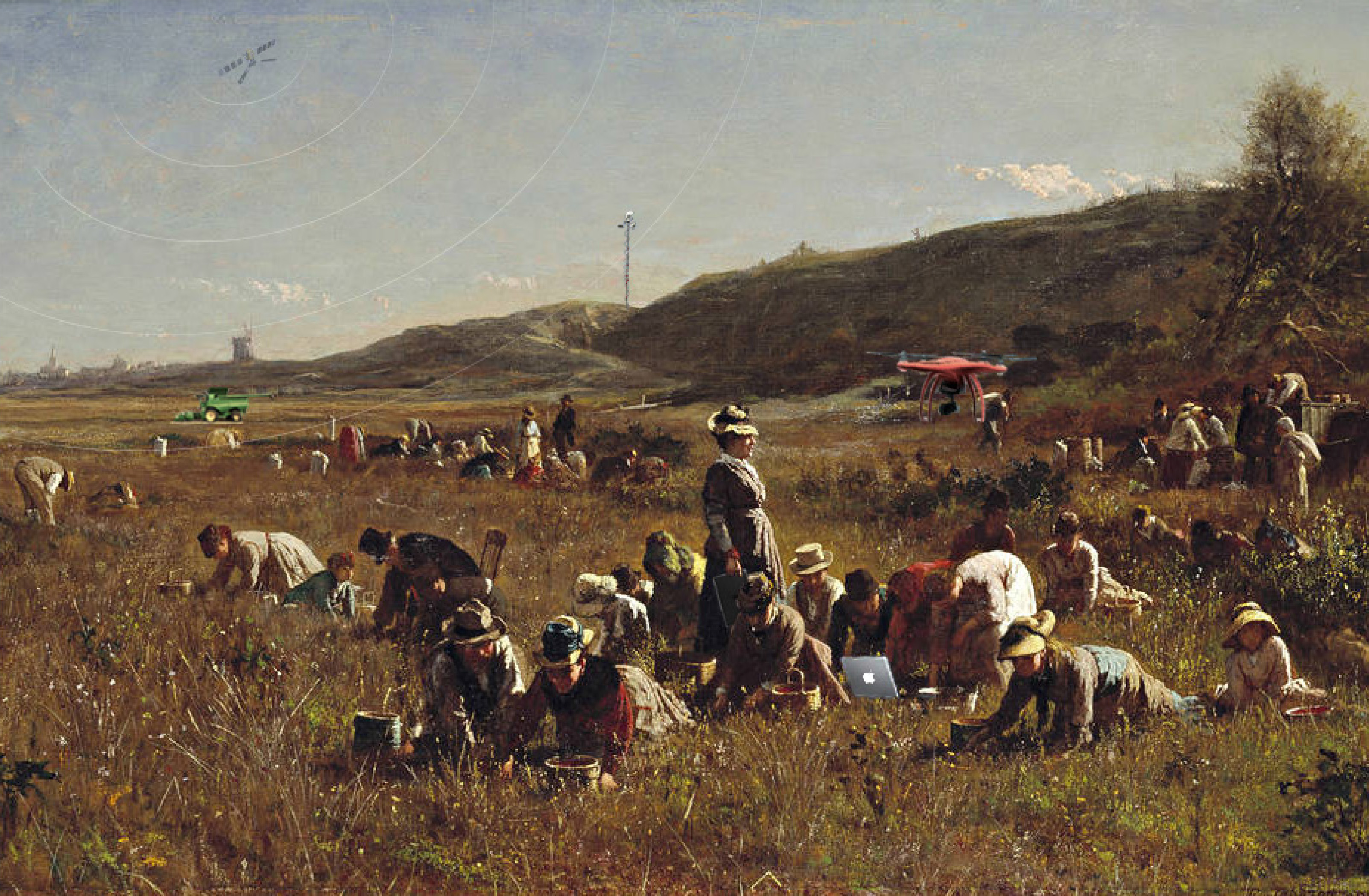
Bibliography ↗
1. Census.gov
2. UN World Urbanization Prospects: 2014 Revision
3. https://www.pbs.org/newshour/ nation/rural-america-thing-past
4. Gabe, Todd M., and Jaison R. Abel. “The New Rural Economy: Deployment of Advanced Telecommunications Infrastructure in Rural America: Measuring the Digital Divide.”American Journal of Agricultural Economics, vol. 84, no. 5, 2002, pp. 1250., doi:10.1111/1467-8276.00385.
5. UN Food and Agricultural Organization, 2016
6. USDA
7. TEDx - Matt Waits
8. Rem Koolhaas, the Countryside, Oct, 29, 2015, Harvard GSD
9. https://worldindustrialreporter. com/john-deere-ibm-pilot-createfuturistic-model-manufacturing/
10. Gebbers, R., and V. I. Adamchuk. “Precision Agriculture and Food Security.” Science, vol. 327, no. 5967, 2010, p. 828.
11. UN FAO
12. https://www.deere.com/en/ technology-products/precision-agtechnology/
13. USDA, Economic Research Service and National Agricultural Statistics Service, 2015 Agricultural Resource Management Survey
14. Gebbers, R., and V. I. Adamchuk. “Precision Agriculture and Food Security.” Science, vol. 327, no. 5967, 2010, p. 830.
2. UN World Urbanization Prospects: 2014 Revision
3. https://www.pbs.org/newshour/ nation/rural-america-thing-past
4. Gabe, Todd M., and Jaison R. Abel. “The New Rural Economy: Deployment of Advanced Telecommunications Infrastructure in Rural America: Measuring the Digital Divide.”American Journal of Agricultural Economics, vol. 84, no. 5, 2002, pp. 1250., doi:10.1111/1467-8276.00385.
5. UN Food and Agricultural Organization, 2016
6. USDA
7. TEDx - Matt Waits
8. Rem Koolhaas, the Countryside, Oct, 29, 2015, Harvard GSD
9. https://worldindustrialreporter. com/john-deere-ibm-pilot-createfuturistic-model-manufacturing/
10. Gebbers, R., and V. I. Adamchuk. “Precision Agriculture and Food Security.” Science, vol. 327, no. 5967, 2010, p. 828.
11. UN FAO
12. https://www.deere.com/en/ technology-products/precision-agtechnology/
13. USDA, Economic Research Service and National Agricultural Statistics Service, 2015 Agricultural Resource Management Survey
14. Gebbers, R., and V. I. Adamchuk. “Precision Agriculture and Food Security.” Science, vol. 327, no. 5967, 2010, p. 830.